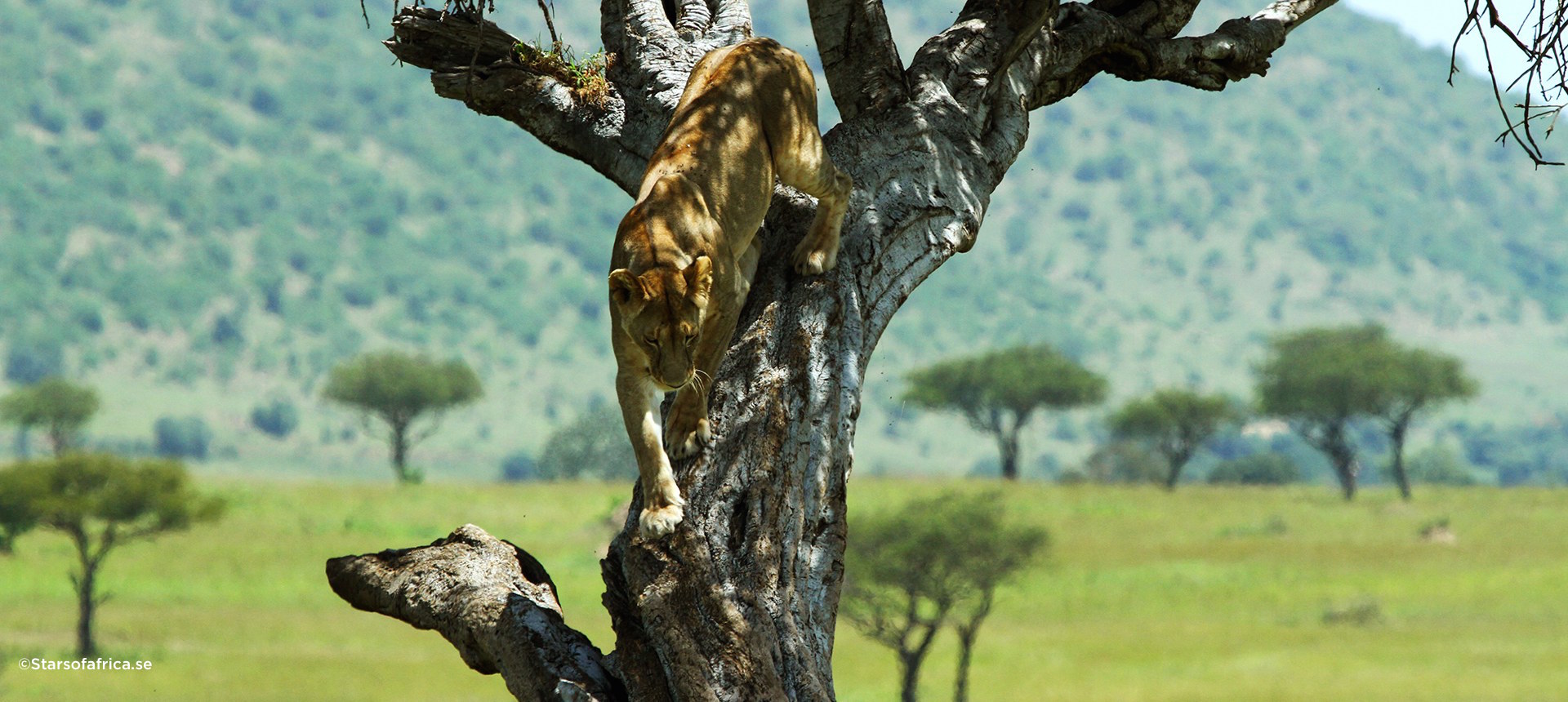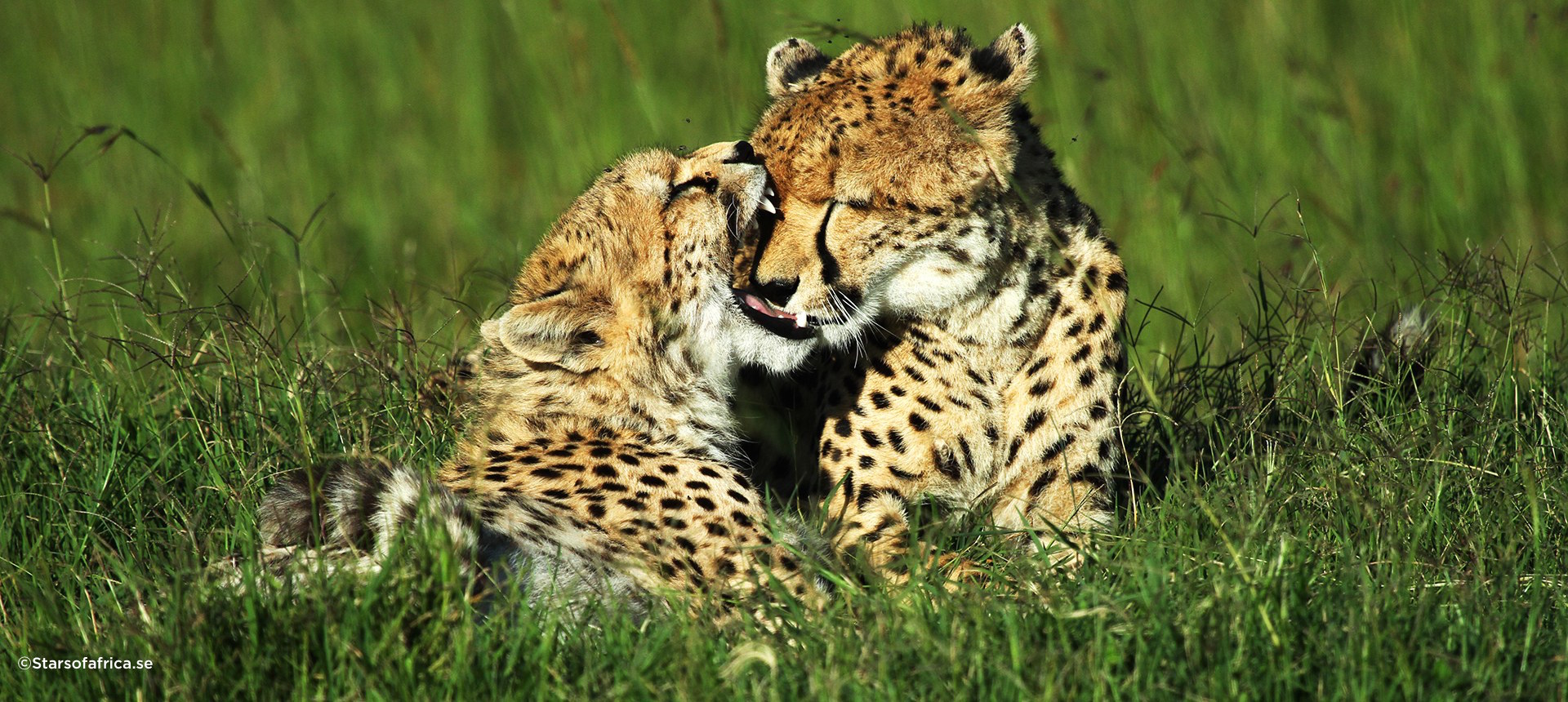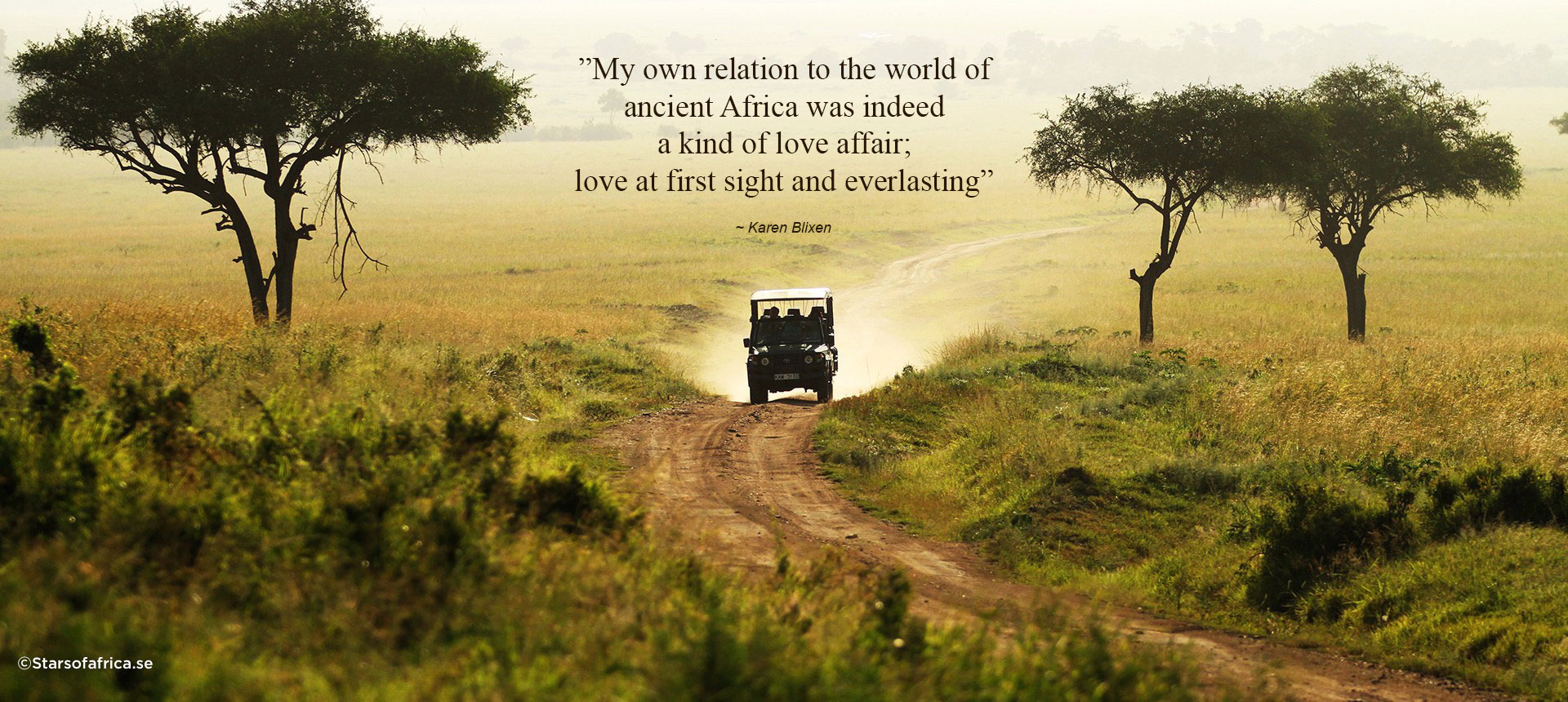KENYA
A KALEIDOSCOPE OF COLOR, INCREDIBLE VISTAS, ABUNDANT WILDLIFE AND ENDLESS PLAINS
Kenya is a magnificent country, a land of enormous variety and exceptional natural beauty, renowned for its vast wilderness areas and the annual Great Migration – one of the new Seven Wonders of the World, when millions of herbivores cross the Serengeti-Mara ecosystem. Within its borders there are timeless, vibrant cultures, pristine beaches and coral reefs, equatorial forests, flamingo ringed soda lakes, the mighty snow-capped peak of Mount Kenya, searing deserts and cool highlands.
Know especially for its phenomenal big game, Kenya has been immortalized as the home of the safari by legendary personalities such as Ernest Hemmingway and Karen Blixen. It was in her beloved Kenya that Karen Blixen started a coffee plantation. She portrayed her time in Kenya in her book My African Farm and it is here also that the book was transformed into the award-winning movie, Out of Africa. This classic movie portrayed the romance, thrill and excitement of the country.
Writer Ernest Hemingway traveled to Kenya and other points in East Africa and his experiences provide the basis for some of his widely read short stories.
Kenya is roughly the size of France and home to Lake Victoria, the world’s second largest freshwater lake. Also in Kenya is Africa’s second highest mountain. Mount Kenya summit altitude is 5,199 meters, 17,057 feet, above sea level.
This land is home to some of man’s earliest ancestors. Some of the earliest known evidence of early man’s existence has been uncovered on the shores of Lake Turkana, Kenya.
There are around 42 different tribes, each with their own unique cultures, in Kenya. While Swahili and English are the official languages, the some 44 million people speak about 60 different languages.
Where to stay
Chyulu Hills
Diani Beach
Laikipia
Maasai Mara
Nairobi
SAFARI IN KENYA
Kenya is a premier safari destination with its world famous wildlife protected in 48 National Parks, Reserves and Marine Parks, as well as in many private Conservancies. Strict regulation, rigorous enforcement against poachers and a progressive environmental policy have all worked to keep Kenya’s wildlife abundant. Kenya is where the concept of the safari was born and safaris here offer a large array of activities – from ballooning and horseback riding to bush walking and vintage biplane excursions.
THE MAASAI MARA NATIONAL RESERVE
The Maasai Mara National Reserve was established in 1961 and is considered one of the foremost nature reserves in all of Africa. It is a natural extension of the Serengeti National Park in neighboring Tanzania. Maasai Mara is part of an ecosystem that along with Ngorongoro and Serengeti, protects the world’s largest and most diverse wildlife habitats. Open savannah, small hills and acacia forest dominate the landscape. The large Mara and Talek rivers influence both the extraordinary scenery and wildlife in this National Reserve.
The Maasai Mara covers 1,672 square kilometers, 430 square miles, of unspoiled wilderness and is home to approximately 450 bird species and 95 animal species, including all the great predators.
Maasai Mara National Reserve is named for the Maasai people who inhabit the area, and for the Mara River that flows through it. Blessed with an astounding year-round concentration of animals, along with the climax of the Great Migration, Kenya’s Maasai Mara National Reserve provides an unsurpassed wildlife experience.
THE GREAT MIGRATION
On the vast open plains of the Serengeti and deep into the rolling hills of the Maasai Mara the largest animal herds on the planet move in this a never-ending natural pattern in response to an undeniable imperative – the need to find fresh, nourishing grazing and, it’s now thought, better quality water. This exceptional natural phenomenon is renowned as Africa’s greatest wildlife spectacle. The thundering hooves of the herds and the enormous clouds of fine red dust they leave in their wake have become an icon of the East African safari. The Great Migration is a unique part of our planet’s biological heritage, consisting of up to two million wildebeest, 200,000 zebras and 350,000 Thompson, impala and Grant’s gazelles.
Between the months of July and October the wildebeest, accompanied by vast numbers of zebra and gazelles, make the long and dangerous trek from drier lands in Tanzania, northwards to the corner of Kenya. Lines of animals stretch as far as the eye can see across the plains. It is a time of plenty. But it is also a time when the predators are drawn from all around. In the long grasses lion, cheetah, leopard and hyena prowl. Most dramatic of all is the moment when the migration arrives at the Mara River. The wildebeests and zebras must cross the river to reach rich grazing on the other side. As animals throng, crocodiles cruise the river waters. And high above on the thermals, soaring birds, eagles and vultures, search for carrion left by the predators.
Being a natural event, the migration changes year to year in both timing and location, it is a timeless circular trek across the face of Africa following the pattern of the rains, hence difficult to predict. Generally the herds start arriving to the Mara by late July, the Mara crossings usually takes place in August, a dramatic interplay between the wildebeests, zebras and the resident gigantic Nile crocodiles. Come September, the huge mass of animals has arrived in the green and pleasant Maasai Mara presenting breathtaking sceneries. By November the migration starts moving south in anticipation of the new seasons rains which are usually about to start. In reality the Migration is not a continually forward motion. They go forward, back and to the sides, they mill around, they split up, they join forces, they walk in a line, they spread out, they hang around. So it is important to note that one can never predict with certainty where they will be; the best we can do is to suggest likely timings, based on past experience.
MARA CONSERVANCIES
There are a number of permanent camps and lodges in the Maasi Mara National Reserve, a relatively small park. The best solution to get away from crowds is to experience a safari in one of Kenya’s conservancies. Conservancies are large tracts of land, often adjoining National Parks, which conservation operators lease from local communities or private ranchers. The agreement is based on the understanding that the land will not be used for grazing cattle or farming, but left alone for the exclusive use of wildlife and a relatively small tourist population. This provides a sanctuary for wildlife, safari guests and traditional cultures like the Maasai. Actively seeking out a safari operator who includes the use of conservancy land is an exceptional way to be a responsible adventurer.
CHYULU HILLS NATIONAL PARK
The Chyulu Hills are one of the most iconic landscapes on the continent, these are the “Green Hills of Africa” that Ernest Hemingway returned to many times. It was in this area, while camping in the hills and plains in the shadow of Africa’s highest mountain, he got inspired to write “The Snows of Kilimanjaro.”
Tucked away between Tsavo West National Park and Amboseli National Park, Chyulu Hills National Park boasts striking and diverse landscapes with amazing views of Mount Kilimanjaro. Large granite outcroppings rise over rivers, and lava flows cut across the plains and with a deep and mysterious cloud forests on the crest of the hills. In addition to exploring the Park by vehicle, this unique habitat can be explored by horseback, mountain bike or on foot.
LAIKIPIA
Iconic Laikipia grandly and gorgeously situated at an altitude of 6,500 feet, in a non-malarial area and with a year-round moderate climate stretching from the slopes of Mount Kenya to the rim of the Great Rift Valley. Home to several private ranches and some of the most exclusive game viewing in Kenya.
The Laikipia Plateau lies under the equator in the shadow of the ever-imposing Mount Kenya, offers rich cultural experiences and is a successful conservation model sharing the land between people, wildlife and livestock. A natural haven made up of ranches and conservancies, over time conservationists have made an effort to create a place for communities and wildlife to exist hand in hand to maintain and protect biodiversity in the region.
Vast open plains in the shadow of the snow-capped silhouette of Mount Kenya create a tranquil and secluded setting, where game drives encounter wildlife including endangered species such as black rhino, Grevy’s zebra, reticulated giraffe, Sitatunga antelope, Jackson’s hartebeest, Somalia ostrich and wild dogs along with impressive numbers of cheetah, leopard and lion that prey on impala and Grant’s gazelle. Oryx, gerenuk, kudu, several, baboon, eland, vervet monkey, hippo, bat-eared fox, silver-backed jackal, and the wily hyena are but a few of the other wild jewels that call Laikipia home – all with few other vehicles in sight. After Maasai Mara, Laikipia has the biggest and most diverse mammal population in Kenya.
This abundance of free-roaming wildlife share the lands with indigenous communities including the Laikipia Maasai and Samburu.
This is also the perfect base to explore the wilder north and great lakes of Kenya, private exclusive, excursions in helicopters.
Read more about Helicopter Safaris »
Wildlife
Kenya is a naturalist’s paradise with abundant elephant, buffalo, giraffe, lion and cheetah alongside the migratory wildebeest and zebra Thompson’s gazelle and other grazers. Leopards are frequently encountered, endangered black rhino find retreat in dense thickets, and large rafts of hippo and enormous crocodiles are found in the Mara River.
PHOTOGRAPHY
Known for its legendary wildlife and evocative landscapes, Kenya offers the photographer countless opportunities to capture iconic images of Africa. Blessed with an astounding year-round concentration of animals and the climax of the Great Migration, Kenya’s Maasai Mara National Reserve provides an unsurpassed wildlife experience, where one can expect to photograph phenomenal wildlife and the most breathtaking landscapes in Africa. The Reserve is a photographer’s paradise especially during the drier seasons; July/August to October/November. During this time two million wildebeest, 200,000 zebras and 350,000 Thompson, impala and Grant’s gazelles make it north to the Mara. Crossing the Mara River where the enormous Nile crocodile that has been preying on the migrating herds crossing this river for thousands of years, is the greatest obstacle.
In the footsteps of the herbivores follows the predators. The large carnivores includes; The famous black-maned Mara lions, leopard, cheetah and the spotted hyena. Elephants, giraffes, zebras, wildebeest, topi, kongoni, Thompson’s and Grant’s gazelle, waterbuck and primates make the Mara a holistic photographic experience in Africa. Especially, the cheetah of the Mara offers exceptional photographic opportunities. As with the rest of Kenya, the birdlife is abundant, offering remarkable opportunities for bird photography.
Over the past 10 years private concessions have seen the boundaries of the conservation land bordering the park increasing considerably. Many of these private concessions such as Mara North and Olare Motorogi provides some of the best game viewing along with an exclusivity, which is not found in the park. Off road driving, night drives and walks are other privileges, which photographers can enjoy in the private concessions.
Hemingway described the Chyulus as the ”green hills of Africa” located within the Amboseli-Tsavo ecosystem. It spans over one million acres, and is an important wildlife corridor. Its hills are covered in cloud forest, its plains stretch out to meet Kilimanjaro, and its volcanoes dot the landscape, making it one of the most scenic places in all of Africa.
CLIMATE
From the tropical humidity near the coast to the dry heat of the savannah or semi-arid and the cool air of the highlands, Kenya’s climate varies across the country. Lying on the equator, Kenya has a pleasant tropical climate with large regional climatic variations influenced by several factors, including altitude. The country’s daytime temperatures average between 20°C/68°F and 28°C/82°F, but it is warmer on the coast. Being on the equator, Kenya does not experience a real winter or summer. There are, however, both dry and wet seasons.
Dry season, June – October
Daytime temperatures are usually around 23°C/73°F at higher altitudes, like the Maasai Mara, and 28°C/82°F at lower altitudes, like the coastal areas. During the dry season the sky is clear and days are sunny. Early morning temperatures at higher altitude are typically 10°C/50°F. It is advised to pack warm clothing as morning game drives in open vehicles will be cold. There is very little rain in most of the country so these are the least humid months.
Wet season, November – May
During the wet season daytime temperatures are between 24°C/75°F and 27°C/81°F at higher altitudes. At lower altitudes daytime temperatures are more consistent and hover at 30°C/86°F. Mornings stay pretty cool at higher altitude and it is advised to pack warm clothes for early morning game drives in open vehicles. From December to April the humidity is intense in Tsavo and coastal areas.
Short rains – A period of unpredictable, short rains between November and December lasts about a month. The rain is sometimes heavy, but mostly falls in the late afternoon.
January and February
During these months a dry spell in the rainy season occurs and it rains less. How long the spell lasts and when it takes place, exactly, is unpredictable.
Long rains – March – May These months get the most rain and it can downpour on a daily basis, although seldom the whole day. It’s very cloudy especially in the highlands. Humidity is higher and will be particularly noticeable in the coastal regions.







